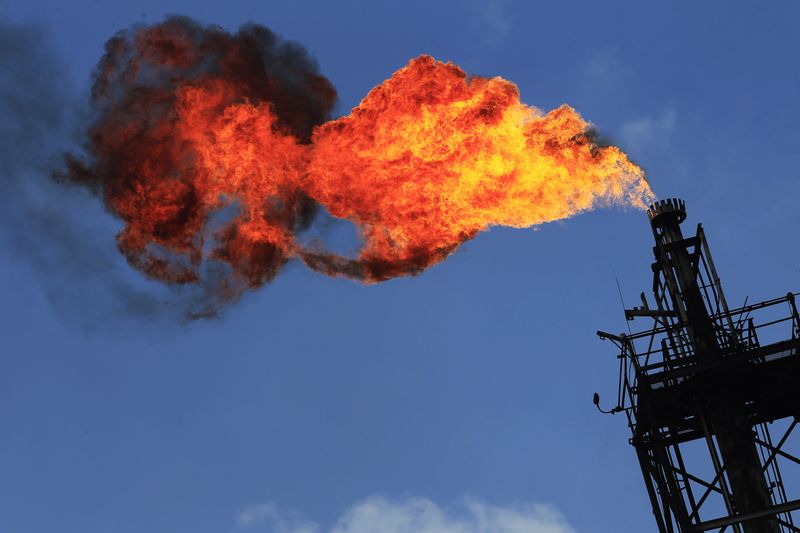By Barani Krishnan
Investing.com -- The bears in natural gas aren’t throwing in the towel yet as the debate rages on whether the market has bottomed ahead of the arrival of delayed winter chills.
New data pointing to higher production of dry gas also offset any bullish sentiment on the market, analysts said.
The front-month March gas contract on the New York Mercantile Exchange’s Henry Hub settled virtually flat at 2.684 per mmBtu, or metric million British thermal units, after hitting a 21-month bottom at $2.615. The last time a front-month gas contract on the Henry Hub went lower than that was on April 15, 2021, when it struck an intraday bottom of $2.583.
“One of the most significant drivers influencing the bearish sentiment revolves around dry gas production volumes hovering near 100 billion cubic feet per day or more,” said analysts at Gelber & Associates, a Houston-based consultancy on energy trading.
“This robust production in the midst of largely absent winter weather demand is setting up gas storage inventories to see restrained withdrawals over the next several weeks.”
As for impending winter chills, even those weren’t as supportive as they used to be, analysts at the consultancy said.
In Tuesday’s reading, the major weather forecast models, including the U.S.-based Global Forecast System and the European ECMWF models, showed that the looming cold weather event would be limited to the portions of the northern U.S. tier of the nation, without meaningfully impacting the southern Plains and the Southeast region of the country.
“And it’s not just the lack of cold that enticed sellers to remain committed, as the medium-range outlook of the GFS and ECMWF models suggests that a widespread warm-up in temperatures will unfold for most areas east of the Rockies from roughly February 7 through at least February 22,” Gelber’s analysts said.
“Unless Old Man Winter makes a surprise return to the market in a huge way in February and March, the gas storage carry-out will be on pace to see a surplus of supply at the end of the withdrawal season in late March.”
This week’s 13% drop in gas prices showed that the short-sellers behind the market’s 60% plunge over the past seven weeks weren’t done yet.
The meltdown in gas pricing came after an unusually warm start to the 2022/23 winter that led to a collapse in demand for heating fuels. Prior to the selloff, the Henry Hub’s front-month hit 14-year highs of $10 per mmBtu in August, and even traded as high as $7 in December.
Due to weak consumption, U.S. gas in storage stood at 2.729 tcf, or trillion cubic feet, at the close of the week to Jan. 20, up 4% from the year-ago level of 2.622 tcf, according to a weekly update provided by the Energy Information Administration, or EIA. The agency provides inventory updates every Thursday.
